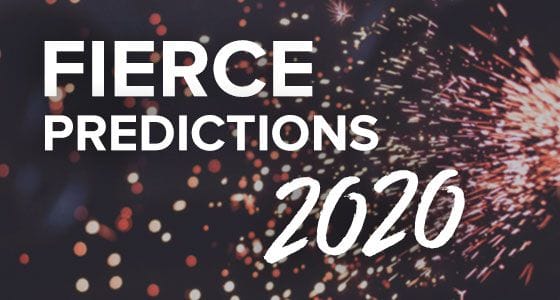
It’s no secret that the business world has experienced rapid change and increased pressure to accelerate innovation this year. In response, organizations began laying the foundation for plenty of new initiatives (digital transformation, anyone?), programs and processes in 2019.
While these steps will prove successful for many companies in the coming years, we predict a major player will be at the forefront in 2020 as company leaders continue reacting to the changing marketplace: the employee experience.
As we head into the New Year, leaders across the globe will be unwilling to settle for the status quo — out of excitement, necessity, or both. Based on what we hear from the clients we work with day in and day out, it’s clear that leaders are striving to push the envelope and redefine what it means to provide a better employee experience through all means necessary — especially technology.
From our press release, we predict the following workplace trends will take top priority in the New Year:
1. Remote work will no longer be treated as a perk, but rather a necessity for employee retention.
According to the Bureau of Labor Statistics, not only has remote working increased by 115 percent since 2005 with no signs of slowing down, more than 16 percent of the entire American workforce now say they work remotely at least part of the time.
These rising numbers have turned this perk into a vital benefit for organizations in which remote work is possible, hoping to attract and maintain their top employees.
In 2020, organizations will focus on the full working experience of remote employees. They’ll take steps to ensure these employees truly feel that they are an integral part of the company and its culture and that they are not siloed from employees who physically work together.
Organizations will focus on events, training and redefining expectations to ensure these efforts are successful.
2. Leading through rapid change will be a critical skill to master.
The speed of technology advancement has created a marketplace that demands constant workplace evolution in order to succeed.
According to the International Data Corporation, organizations will spend $1.7 trillion on digital transformation over the next two years. With this rapid growth comes change, and if leaders want their organizations to keep up within their industries, they must fully understand and excel at change management.
In 2020, leaders will focus on training their employees of all levels to embrace the benefits of change and how to properly tackle it using a mix of change management technology, frameworks and team building.
A key aspect of this will be to focus on conversation skills and optimizing performance management. In order for change to be successful, it must first and foremost be people-led versus technology-led.
3. Inclusion will be at the forefront of Diversity and Inclusion (D&I) efforts.
While efforts to diversify organizations will remain a priority, this alone will no longer be enough to remain competitive in the marketplace. Rather, fostering inclusion will be recognized as a separate initiative from diversifying an organization.
In the New Year, creating an inclusive company culture that empowers employees to feel that they can show up to work and be themselves will become more vital as the line between work and life continues to blend together.
Fostering inclusion creates a strong and healthy culture that reduces hostility, not to mention lawsuits. With the 2020 election fast approaching, opinions and tempers will be at an all-time high when it comes to not only the presidential race but local politics as well.
Organizations will work to ensure every employee — regardless of sex, gender identity, religion and beliefs — feel welcome and respected during these divisive times.
4. Predictive analytics and artificial intelligence (AI) will be used to improve HR outcomes.
While each employee is critical to an organization, it can be difficult for HR leaders to see the bigger picture and identify trends when focused on individuals. The ability to use data and artificial intelligence to better understand employees and historical precedent will be an incredibly powerful tool used by leaders.
In the New Year, human resource departments will hire more data analysts than ever.
These teams will increasingly take advantage of predictive technology to determine key data points such as top talent most at risk of attrition, best-fit application candidates, when to invest in employee career paths and areas of HR process improvement.
5. Virtual Reality (VR) technology will become more prevalent in leadership training programs.
Most leadership and development trainings fail because they are unable to tap into emotions and personal experience for employees to successfully absorb what they learn.
VR simulation will start to transform trainings into experiences that can control what an individual sees, hears and feels throughout their learning. This behavior can also be collected for data to maximize the benefits of the training.
In 2020, VR will become a greater part of the conversation for organizations to deliver quality, immersive training for their employees.
It’s important to remember, as we head into not only a new year but a new decade, that the way HR professionals once approached trends in the workplace is no longer cutting it, and is something organizations are slowly coming to terms with.
It’s an exciting time for company leaders as the opportunities are vast to advance the work we do and the people we do it with in truly transformative ways. It is more important than ever to be focused on the individuals inside of your companies.

LOOKING TO CREATE A HEALTHY, LOW-STRESS WORKPLACE?
Explore the 5 conversations you need to start having
Tags: #Cultural Change, #Leadership Training


